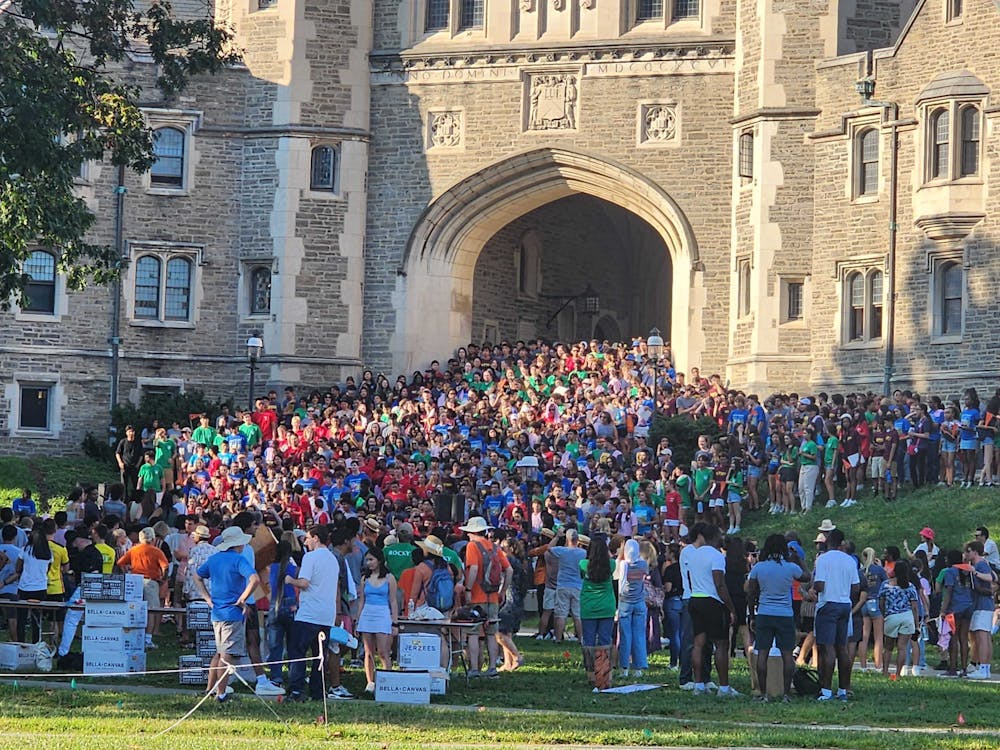President Christopher Eisgruber's long-planned expansion of the student body will have a smaller effect on the Class of 2027 after enrollment numbers decreased by 8.93 percent from the Class of 2026. The drop is intended to offset larger than expected enrollment for the Class of 2026.
The Class of 2026 was set to be the first larger class, 125 students bigger than the Class of 2025, with each class matching its size until the student body increased by 500 students in the aftermath of Princeton adding two new residential colleges. 1500 students joined the class, over 150 more than the Class of 2025 and 75 higher than the University's projection.
The increase in the class size was due to a admit yield rate of 69.2 percent, slightly higher than historical rates, but not as high as the 78.32 yield rate for the Class of 2025. The yield rate was consistent with yield rates at other Ivy League schools, according to a Harvard Crimson analysis.
In the aftermath of the larger class, the University worked to finish the new colleges in time for opening. In 2023, speaking on the unexpected enrollment, Eisgruber said that the new residential colleges had enough housing to accommodate the expanded class size. If enrollment had exceeded capacity, Eisgruber speculated at the time, the University might have had to apply for permits to put housing trailers on Poe Field.
In order to not exceed capacity as future classes enter the University, the University aimed for a slightly smaller class for the Class of 2027.
“[Given] the unexpected over-enrollment of the Class of 2026, our goal for the Class of 2027 was 1,375,” explained University spokesperson Michael Hotchkiss in an email to the ‘Prince.’ “That figure is still larger than target class sizes prior to the beginning of the expansion of the undergraduate class. We expect that our steady-state goal of 1,425 will return for next year’s class.”
The lower target size was first signaled by Eisgruber in his 2022 Annual Letter to the Community, where he said that the University would not admit classes of this size in the immediate future.
The adjustment comes despite the fact that Eisgruber wrote in 2021 in Princeton Alumni Weekly (PAW) that the New Colleges would expand the number of beds by 1,000, only 500 of which were planned to be used as part of campus expansion. This would leave 500 extra beds, presumably to account for annual variation. The increased class sizes also stressed other University infrastructure, however, including popular intro classes.

The enrollment of 1,366 students in the Class of 2027 brings the average of the two class years to 1,433 students, on par with the University’s intended expansion outlined in the 2016 Princeton University Strategic Framework. This five-year plan calls for the undergraduate population to increase by 500 students in order to meet nationwide demands for “exceptional teaching and research.”
“Each year we turn down students who have the talent and character needed to reap the full benefit of a Princeton education, who would add to the diversity and luster of our student body, and whose Princeton education would enable them to contribute significantly to the world after their graduation,” the framework asserts.
The University updated the Strategic Framework in June 2019 and June 2023, noting successes in the expansion to the undergraduate class thus far with the construction of Yeh College and New College West.
Eisgruber has characterized expansion in the past as one of Princeton's moral imperatives.

“I felt from the moment I took office that if we could expand while preserving the essential character of the Princeton experience, we had a moral obligation to do so,” he wrote in PAW in 2021.
The inconsistent sizes in classes highlight the risks in precise admissions adjustments when yield rates vary significantly, even without the disruption of the pandemic. While inconsistent class sizes may have impacts on campus housing, academics, and student groups, class sizes have seen significant inconsistencies since over 700 leaves of absences or deferrals during the height of the COVID pandemic.
Jasmyn Dobson is a senior News contributor for the ‘Prince.’
Christopher Bao is a News contributor for the 'Prince'
Please send any corrections to corrections[at]dailyprincetonian.com.








